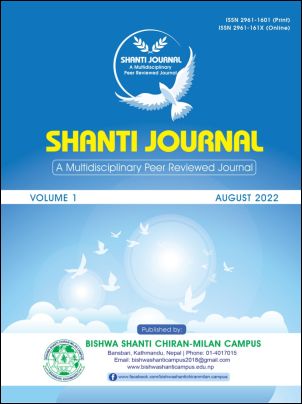Biogas Plants and Its Impact on Rural Life in Nepalese Communities
DOI:
https://doi.org/10.3126/shantij.v1i1.47817Keywords:
Biogas, Biogas Plant, Renewable energy, Gobar gas, EnvironmentAbstract
The main components of development are energy. The manufacturing of biogas is an established technology that is largely used to produce sustainable energy as well as to monetize organic waste. The potentiality of the development of biogas energy is very high in rural Nepalese community and the mainly used for cooking. This article aims to know the impact of biogas plant installation on the community people in their lifestyle including the study area of Lekbesi Municipality - 4 Dasharathpur, Surkhet. Quantitative research design was adopted to meet the objectives and extent of activity as well as the descriptive. Data were collecting through the questionnaire method. The purposive sampling of 72 HHs was taken to gathering the necessary information. The study found that, Biogas plant is a reliable source of renewable energy for limiting deforestation rates, increasing productivity, and protecting the environment from human population increase. The workloads of people, particularly women, have decreased in everyday activities since the installation of the biogas plant, which has had a good impact on the family members’ workload schedules. The current study shows that there is a rising tendency toward reliance on biogas plants, which appears to be solid evidence for the preservation of forest resources. The findings of this article have been helpful for government, non-government, as well as social groups to develop better plans, policies, and practical tactics for providing biogas energy to the poorer sector of rural residents.
Downloads
Downloads
Published
How to Cite
Issue
Section
License
Copyright (c) 2022 Lokendra Woli

This work is licensed under a Creative Commons Attribution-NonCommercial 4.0 International License.
This license enables reusers to distribute, remix, adapt, and build upon the material in any medium or format for noncommercial purposes only, and only so long as attribution is given to the creator.




